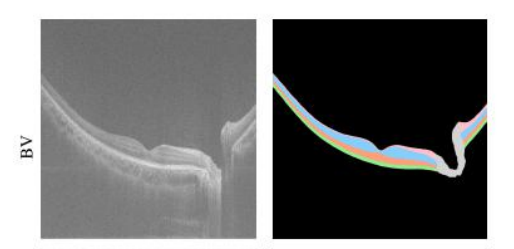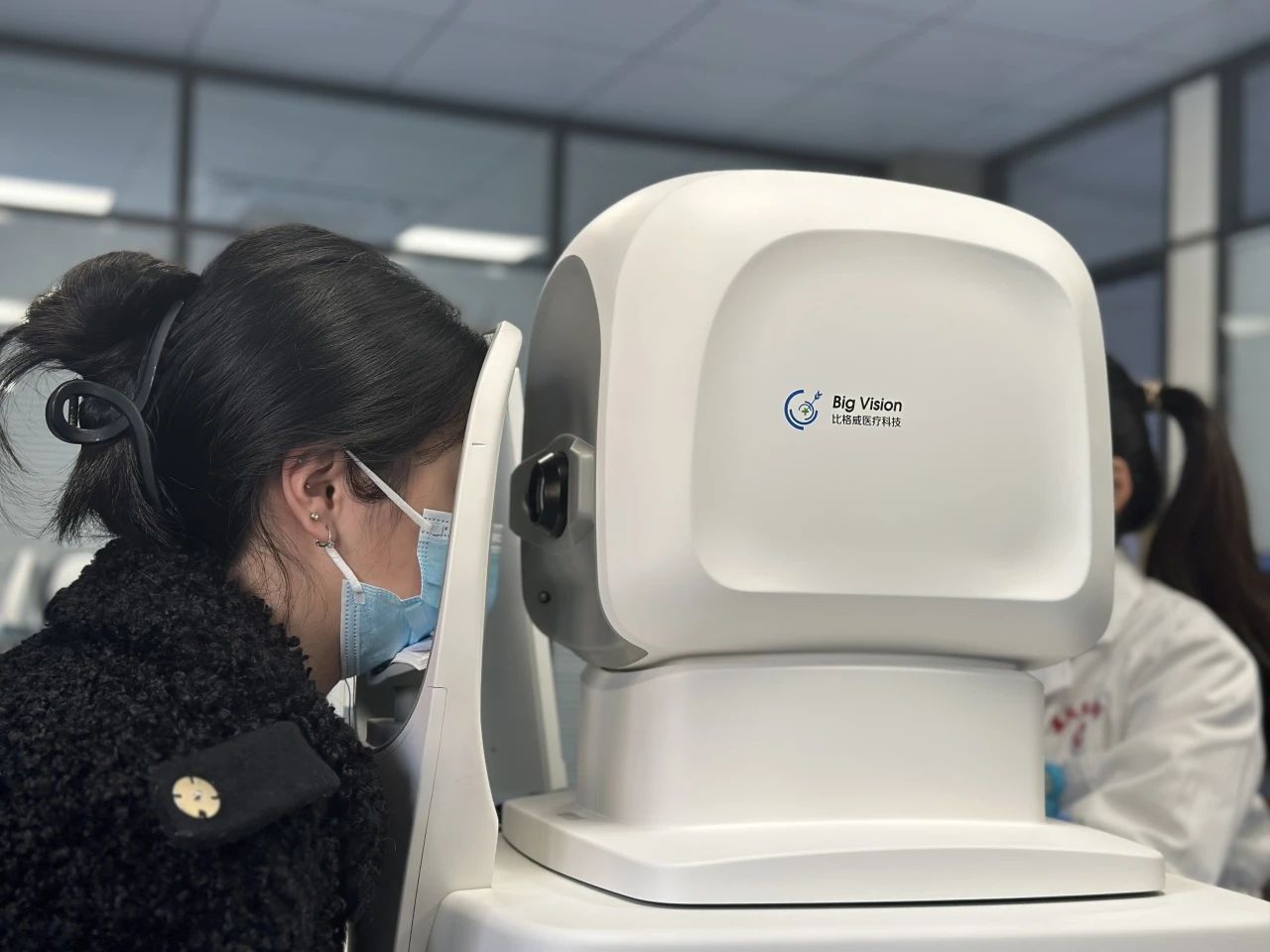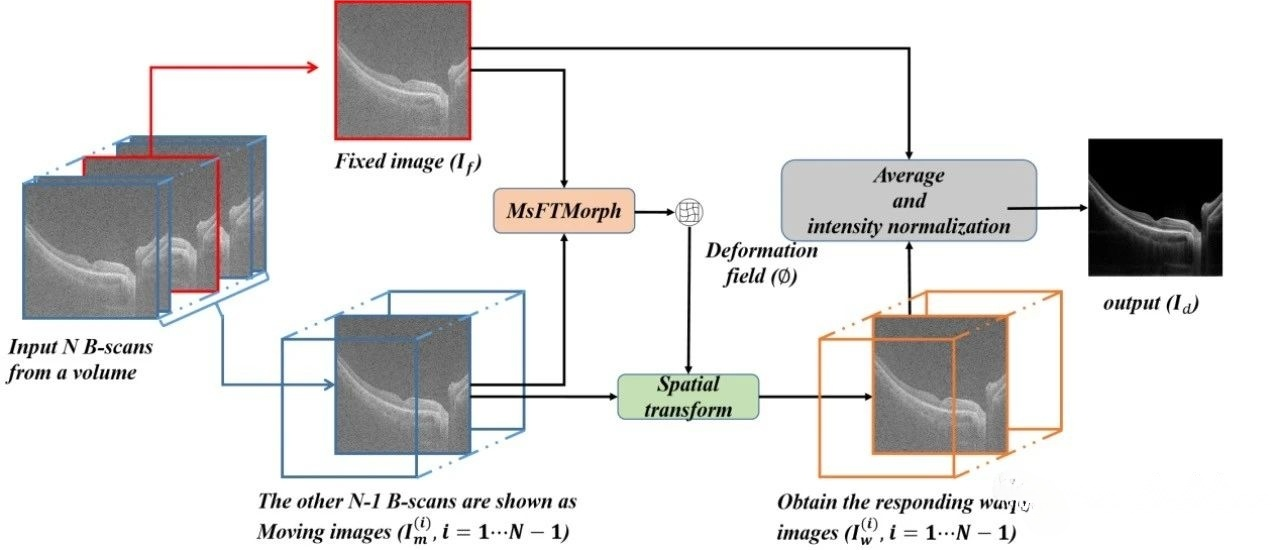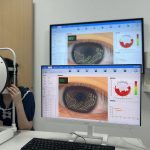
Recently, Tan Zhiwei, a graduate student in the MIPAV Lab of Soochow University, published a high-level paper in the journal IEEE Transactions on Medical Imaging (TMI). “A Multi-scale Fusion and Transformer Based Registration Guided Speckle Noise Reduction for OCT images”. During the experiment, Big Vision automatic artificial intelligence OCT was used to complete relevant scientific research.

Optical coherence tomography (OCT) is based on low coherence interference and is inevitably affected by speckle noise. Speckle noise often reduces the resolution and contrast of the image, causing some retinal details to be blurred, which brings adverse effects on the subsequent image processing analysis and disease diagnosis. Multi-frame averaging is one of the effective methods to reduce speckle noise. However, the displacement deformation between images must be calibrated before averaging, and the current registration methods still have many shortcomings such as slow processing speed and poor generalization performance.

Tan Zhiwei, a graduate student in the MIPAV Laboratory of Soochow University, proposed a multi-scale fusion and transformer registration method (MsFTMorph) to guide the speckle noise reduction based on multi-frame average to reduce the image misalignment caused by the acquisition process. The method achieved good registration accuracy and the best comprehensive performance in the speckle noise reduction of retinal OCT images. In a comprehensive experimental evaluation, Tan Zhiwei used Big Vision automated artificial intelligence OCT to collect OCT data sets from 310 subjects in single-line mode and train the model. The experimental results show that the proposed method is superior to other multi-frame average denoising methods in terms of clear visual effect and avoidance of artifacts.

With industry-leading AI and fully automated operation, Bigway AI OCT can help medical researchers to analyze and research medical image data more conveniently and accurately, and provide strong support for progress and innovation in the medical field. In future scientific research, Big Vision AI OCT will continue to play an important role in bringing more innovation and progress to the field of medical engineering.

【Analysis of the paper】: Difficulties and challenges
Advanced registration levels are achieved simultaneously in medical image registration tasks of different modes and data sets, and high performance denoising effect is achieved based on multi-image averaging.
【Analysis of the paper】: solution
In this paper, a new image registration method for deformable retinal OCT (MsFTMorph) based on multi-scale fusion and Transformer is proposed to reduce the misalignment between images during the averaging of multiple images. In this model, multiple self-attention module (MST) is proposed to capture remote dependent features, and multi-scale deformation field fusion module (MsDFFT) is proposed to fuse multi-resolution deformation fields and deal with complex deformation by combining multi-resolution fusion strategy to learn global affine transformation.

【Analysis of the paper】: conclusion
This is the first deformable registration algorithm composed of Transformer and CNN for retinal OCT images. Experimental results show that the proposed method achieves the expected performance, outperforming other state-of-the-art methods, and can simultaneously achieve speckle noise reduction and detail structure enhancement. This method can not only be used for 2D OCT image registration, but also be extended to 3D image registration and other medical image modes. In addition, compared with the single-frame denoising method, the proposed method achieves good noise reduction effect while avoiding excessive smoothing, which highlights strong robustness, generalization and denoising effect.








No comments yet.